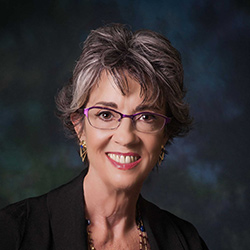By Robyn Stone
We learned many things during the COVID-19 pandemic, but one lesson looms large: when bad things happen, older people are likely to suffer the most.
The ancient Greeks were the first to propose that human activity could change the earth’s temperature and influence rainfall. But it wasn’t until 1988—the hottest year on record up to that point—that the public began paying attention to such ideas.
During that summer of drought and wildfires, U.S government scientist James Hansen told Congress he was “99% sure” that global warming was upon us. A year later, the United Nations Intergovernmental Panel on Climate Change launched a research effort that would eventually predict climate-change induced heat waves, droughts, and hurricanes.
It seems appropriate to review our long history with climate change during April, when people around the world join together to celebrate Earth Day. This year’s celebration—our 52nd—was made even more poignant by the large number of weather events we’ve experienced around the world in the past few years. On one April day alone, the Associate Press (AP) reported that a line of tornadoes in central Texas had injured nearly two dozen people, a tornado in Minnesota had destroyed a small town, and a spring blizzard was expected to drop two feet of snow in North Dakota.
“This is nutso,” a resident of Mandan, ND, told AP News.
Nutso, indeed.
It’s easy for those of us working in the field of aging services to think that addressing climate change, while an honorable endeavor, just isn’t our job. Environmental causes don’t really relate to the work we do each day. Besides, we reason, what expertise could we or our field possibly bring to the task of addressing such a colossal global challenge?
New research from the LeadingAge LTSS Center answers that question. The Impact of Climate Change: Why Older Adults are Vulnerable makes a strong case for why providers of aging services must care about climate change—and offers a list of actions providers can take to mitigate the negative impact of climate change on the people they serve.
The report offers sobering evidence that climate-related stressors and events are much more likely to result in negative health outcomes for older adults than for younger people. Older adults who live with chronic conditions, cognitive impairment, social isolation, or low socioeconomic status are at greatest risk.
Despite this heightened risk, however, older adults are left out of climate change discussions and are often overlooked until an extreme weather event or disaster has already occurred.
Specifically, local communities aren’t involving older adults or their caregivers in efforts to plan for and respond to climate change-related events. In addition, they’re not helping older adults and their families understand and mitigate their own climate change-related risks.
So, what can—and should—the field of aging services be doing to help local communities change course? The LTSS Center report outlines some important steps:
-
- Build awareness. LTSS providers need to make sure public officials and private citizens alike recognize that older people are at high risk for the negative consequences of climate change.
-
- Provide education: Across the spectrum of LTSS settings, providers must help older adults and their families understand their climate-related health risks and prepare individualized plans to prevent as many negative health outcomes as possible.
-
- Develop partnerships: Within their local communities, providers must reach out to public health officials, first responders, primary care physicians, family members, community organizations, volunteers, faith leaders, and others to make sure everyone is working together to help older adults prepare for and recover from potential climate disasters.
-
- Expand your community reach: Providers must look beyond their own residents and clients to ensure that all older people living in the community, especially those with LTSS needs, are not left out of planning and recovery efforts. First responders need your help to identify where high-risk older people live, so they can include these citizens in disaster planning and intervene quickly during and after a climate event.
- Follow up: The negative impact of climate change events doesn’t disappear after the temperature goes back to normal or the rain stops. Follow-up is critical to evaluate, shelter, and offer resources to displaced older adults, especially those living alone in the community. Providers of aging services can make valuable contributions to this effort.
We learned many things during the COVID-19 pandemic, but one lesson looms large: when bad things happen, older people are likely to suffer the most.
We can never forget that lesson. Nor can we fail to adapt that lesson to climate change-related disasters. That means taking steps today to ensure that when our communities experience such disasters—and they will—we will be ready.
We owe that much to the people we serve.

Robyn I. Stone, DrPH, is senior vice president of research at LeadingAge, and co-director of the LeadingAge LTSS Center @UMass Boston. Her widely published work addresses long-term care policy and quality, chronic care for people with disabilities, the aging services workforce, affordable senior housing, and family caregiving.
